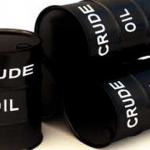The symmetrical broadening bottom is called a bullish (if reversed, then bearish) reversal pattern. This pattern is formulated by two symmetrical horizontal lines that are divergent. It is an inverted symmetrical triangle or looks like an open triangle. The oscillations between the two bands of the triangle are consequently becoming more sizable. Each line has to be touched at least twice for a validation.
The symmetrical broadening bottom indicates the increased nervousness of investors but also with their indecisiveness. If this pattern is not identified immediately, this movement might seem quite random and hence trapping investors.
This formation of the pattern must be indicated by an upward movement. The pattern is frequently attributed to cheap purchases that will form new highs. However, pressure to sell remains strong and the indecisiveness is dominate.
A target price will be given by plotting the height of the triangle from its beginning on the break point. A similar technique is to extend the maximum height of the triangle on the break point.
A graphical representation of a symmetrical broadening bottom follows:

Statistics about the symmetrical broadening bottom are as follows:
– In 58% of cases, there will be an upward exit.
– In 60% of cases, the target of the pattern will be reached by taking the maximum height of the triangle. Then with a downward exit, the percentage will go up to 70%.
– More than 78% of cases, downward breakout occurs when the price is into the lowest third of its annual range.
Pay attention to the indecisiveness patterns.
Bearish potential will be greater than the bullish potential in case of breakout, which is rare in technical analysis.
Notice that from the fifth rotation (i.e., the fifth points of contact on either resistance or support), there will be 80% chance that the exit will occur at the next contact point and the support or resistance of the symmetrical triangle. Then from the sixth rotation, this percentage will rise to 90%.
 Chinese Stocks Fall 6.4%!
Chinese Stocks Fall 6.4%! Net Worth Calculator
Net Worth Calculator A Crude Oil Rally is Unlikely in the Short Term
A Crude Oil Rally is Unlikely in the Short Term